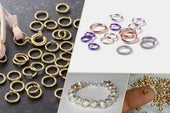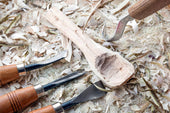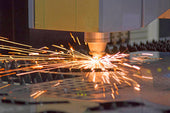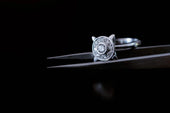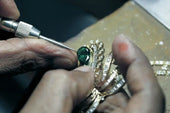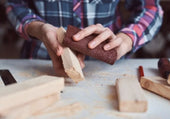At the beginning of the 21st century, hand carving was on the verge of extinction. The cost of acquiring a hand-carving knife is getting higher and higher, and hand-carving obviously increases the value of the product.
The main purposes of engraving include weapon identification (for example, adding the manufacturer's badge or the owner's name to the blade) and personalization (inscriptions, symbols), as well as decoration through patterns and drawings.
Basic technology of metal engraving
The basic engraving technique of metal is to engrave your favorite pictures on the surface. On one hand, you can do it by hand with some manual tools such as a Pneumatic Engraver to cut or cut designs into metal. On the other hand, you can also use an acidic solution to bite into metal to form complex patterns or writing. In addition, some pneumatic tools for engraving are also widely used. Through them, your depth and accuracy of the work can be more stable. Each technique requires special skills and tools, and it offers a range of possibilities for personalization and decoration.
Hand carving
Hand engraving is an art form that has many many centuries. It needs great skills, some patience, and more precision. This traditional method needs manual tools such as engravers, chisels and knives. They can help you cut the design directly on the metal surfaces. Great engravers can express various strokes, pressures and angles to achieve complex patterns, words and images. In this field, although the patterns on the hunting knife are obvious, the flower pictures on their surface is very prominent.
Do you know? Each plant has its profound meaning. These pictures often use the way of flat engraving. It can form an embossed effect on the metal surface, making the inscription or pattern appear raised or depressed. This technique is often used to decorate knife parts and sheaths, adding a layer of symbolic meaning and aesthetic value. The tactile connection between the engraver and the material achieves a level of detail and personalization. It can inject a timeless elegance into every object, reflecting the meticulous craftsmanship of the creator.
Sculpting by Blino
Blino engraving is a meticulous and historical technique. It highlights the delicate texture of the subject by the precise use of dots and lines on the metal surface. It comes from the Italian sculpture and is named after the main tools. The Blino engraving skill uses a variety of pointed tools to create intricate patterns. This method is similar to the texture of animal fur commonly found in hunting patterns. Historically, Blino carvings were used for gun decoration and later adopted by tableware craftsmen. Master craftsmen can use point and line to design each unique piece, giving the bladed weapon unmatched depth and personality..

The execution technique of engraving
Design planning: You firstly should choose your favorite picture. You can sketch the design on paper and refine it until you are satisfied. If you are confused, you can search on the internet.
Surface treatment: You secondly should polish the metal surface to remove oil and dirt and any bad things that may interfere with the engraving process. It is important to make sure the surface is smooth.
Draw design: Then, you can use transfer paper or a pencil to draw the final design on a metal surface. It is important to make sure the design is accurately positioned and visible.
Choose proper tools: Besides, you should choose the right engraving tool for the job. This may include various engraving machines, carving knives and pneumatic tools. The tools should depend on the detail and depth required in the design.
Start engraving: You can start along the outline of the design. In this process, you should be patient. You can use your one hand to guide the tool and create clean, precise lines. For flat engraving, choose the right knife to achieve the ideal relief effect.
Add some depth and texture: I think it is important! You can deepen the carving if necessary to enhance the dimension of the design. Use different carving knives to create textures or change the width of lines in your design to add depth and interest.
Engraving some details: Hey, cheer up! You are almost win! Finally, you can add any fine details to avoid distorting them when sculpting larger areas. You can use Bulinot carving to carefully smear dots, or write on symbolic plants.
Cleaning and polishing: This process you may ignore! But it is important! After your final engraving, it is necessary to clean the metal surface. It can help remove any burrs or debris created during the carving process. You can use a soft brush and gentle cleaning solution to gently clean the area, making sure not to damage the delicate sculpted lines. After cleaning, you can also lightly polish the carved area with a polishing cloth or special metal polish to improve the visibility and contrast of the design.
Hand carving: the oldest method of carving
Engraving is an ancient skill that combines metal forming with detailed finishing by using hammers and chisels. They can help you create beautiful designs on metal surfaces. During the detailed engraving, engravers usually use pneumatic carving knives. I use other tools including steel needles, dyes, and AIDS such as pencils, marking chalk, whetstones, steel rules, and magnifying tools such as magnifying glasses and microscopes.
The technology is widely used and suitable for lots of materials, including various steels and alloys, copper, aluminum, and non-ferrous and precious metals. This made engraving the method of choice for decoration on metal objects, It can help demonstrate the sculptor's skill in giving depth and detail to metal.
Nowadays, mechanical metal carving borrows from traditional methods but is done by machine rather than hand. People move along a predetermined path following a given programming tool to mark the chosen design. For tasks like stainless steel polishing and sculpting, you may need to use specific tool attachments to produce a relief effect. For the hardest materials, you need a diamond cutter head to ensure the precision and durability of the engraving process. This method combines the modern skills with the traditional engraving techniques.
With the development of technology and the emergence of new tools, the boundaries of metal engraving continue to expand. However, the core essence of engraving remains unchanged: a way of expression and customization. Whether you are an experienced engraver or a novice, the world of metal engraving offers endless possibilities for creativity and innovation. With knowledge and the right tools, anyone can embark on a rewarding journey to transform common metals into works of art filled with personal meaning and aesthetic value.










